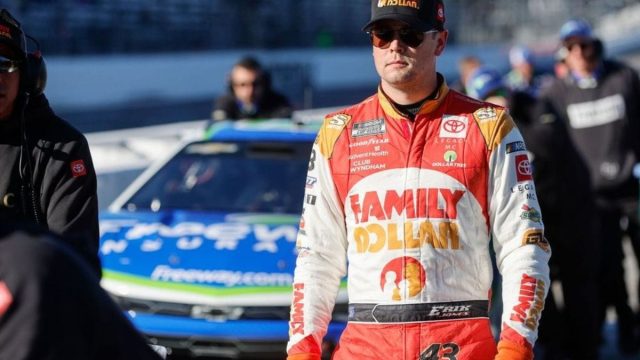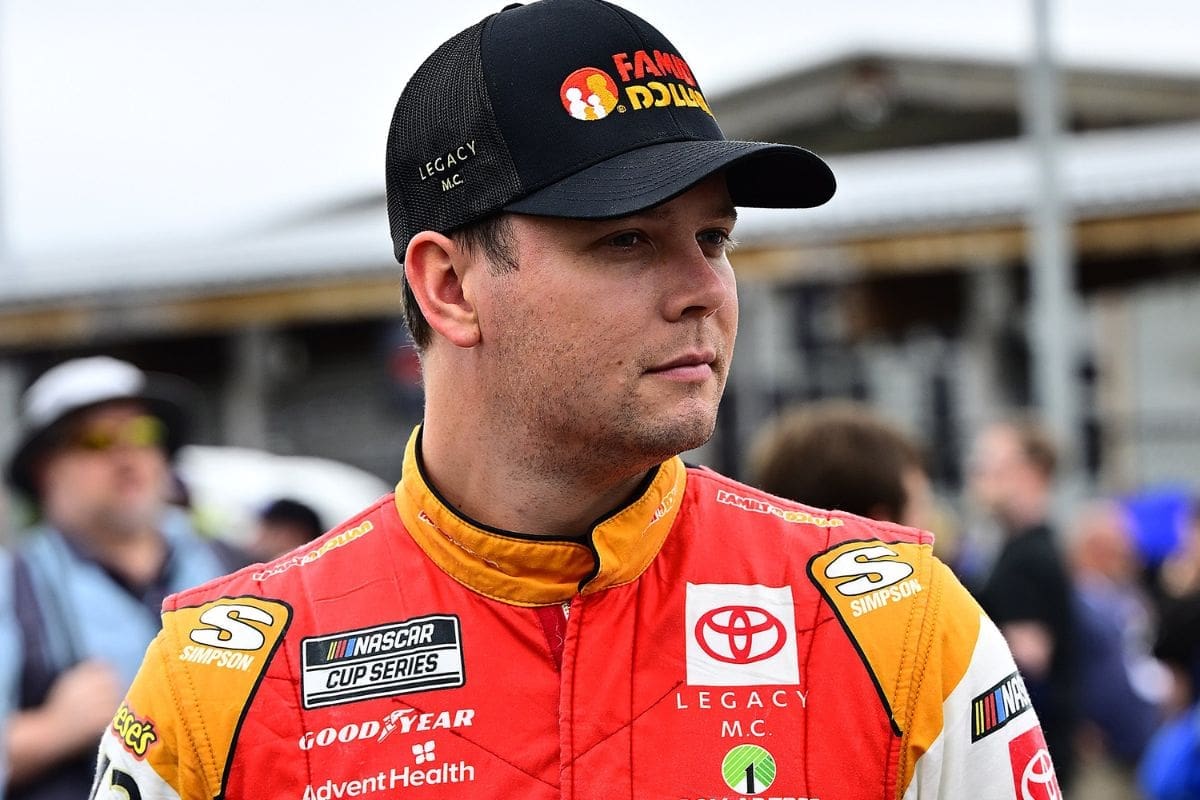Erik Jones Declares Full Recovery: Erik Jones has announced his full recovery from the back injury sustained at Talladega, a significant milestone that highlights his tenacity and dedication to motorsport. This recovery not only marks a personal victory for Jones but also shifts the dynamics of his racing strategy as he resumes full training and competition. However, the path from injury to recovery is seldom straightforward, presenting its own set of challenges and psychological hurdles. As Jones aims to capitalize on his renewed energy to secure a playoff spot, what specific adjustments and strategies might he employ in the upcoming NASCAR season?
Key Highlights
- Erik Jones has declared a full recovery from his compression fracture sustained in the Talladega crash.
- The injury required a mandatory two-week break for rest and intensive medical care.
- Jones underwent structured rehabilitation and medical monitoring to ensure complete spinal health.
- Despite his recovery, Jones has faced challenges in regaining competitive form in recent races.
- His focus is now on optimizing performance and refining team setups for better results.
Erik Jones’ Injury and Recovery
Following a severe crash at Talladega on April 21, NASCAR driver Erik Jones was diagnosed with a compression fracture of a lower vertebra, marking the beginning of his challenging recovery process. The incident occurred during a pileup involving multiple Toyotas, culminating in Jones’s vehicle making direct contact with the outside barrier. The force of the impact resulted in a significant spinal injury that necessitated immediate medical attention and a hiatus from racing.
Jones’s diagnosis of a compression fracture is a serious concern, often requiring both rest and rehabilitation. The vertebra, one of the critical components of the spinal column, plays a significant role in supporting the body’s weight and facilitating movement. The injury’s severity placed Jones on a mandatory two-week break from competition, a period marked by intensive medical care and physical therapy.
Despite the gravity of the injury, Jones demonstrated remarkable resilience throughout his recovery. His commitment to a structured rehabilitation regimen, along with close monitoring by medical professionals, facilitated a steady improvement in his condition. Jones himself reported that his physical health has returned to ‘pretty much 100%,’ although he occasionally experiences residual pain—a common aftermath of such spinal injuries.
“I feel good,” Erik Jones said. “There’s still some occasional pain here and there, but it’s nothing a lot different than what I had before with racing. So, I feel good and am doing normal stuff.”
The road to recovery for Jones has not been without its challenges, but his determination and the support of his medical team have played an essential role in his return to fitness. His ability to rebound from such a debilitating injury speaks volumes about his physical and mental fortitude.
Performance Since Return
Despite a determined return to the track, Erik Jones has struggled to reclaim his previous form, with multiple finishes outside the top 15 highlighting his ongoing challenges. Since his comeback, Jones has faced a series of lackluster performances that sharply contrast with his earlier promise. His recent finishes include an 18th place, three 19th places, and two particularly disappointing results at Iowa Speedway, where he finished 26th and 32nd. These results have left him 159 points outside the playoff points cutoff, currently positioned at 26th in the Cup Series standings.
Each race has been a test of resilience and skill, but the finishes have not aligned with the expectations set by his earlier career. These statistics not only evoke a sense of concern but also highlight the need for strategic adjustments moving forward.
Jones’ current form has certainly raised questions about his ability to reestablish himself as a competitive force in the Cup Series. The gap of 159 points to the playoff cutoff is a significant barrier, making it clear that consistent top-tier finishes are crucial for any hopes of a turnaround. The focus now shifts to how Jones and his team will address these performance issues and work towards improvement in the upcoming races.
Challenges and Struggles
Erik Jones has faced numerous challenges since his return, with the primary struggle being the need to refine the team’s setup and performance from the outset. This process has proven to be particularly taxing, given that achieving competitive form requires significant adjustments and a recalibration of strategies that were disrupted by his injury-induced hiatus.
“I came back and it feels like nothing has been good since.”
“Fortunately — or unfortunately — that’s shared across the board. The 42 [John Hunter Nemechek] has been struggling as well since then.
“It’s hard when you sit out a couple of weeks and you don’t know the direction things are going and you come back, and it’s different. We have to get better, in general, but we have to unload better. That’s been our big struggle.” – Jones
Jones has openly acknowledged that he hasn’t had a successful run since rejoining the racing circuit. His frustration stems from several critical areas that need attention and improvement:
- Team Performance: The overall performance of Jones’ team has not met expectations. The synergy and precision required to excel in racing have been lacking, leading to subpar results.
- Setup Refinement: One of the most pressing challenges has been improving the car setup upon unloading. This initial setup is pivotal as it sets the tone for the entire race weekend. The team has struggled to find the best configuration, which has hampered their ability to compete effectively.
- Adjustment Period: Returning to racing after a forced absence has its own set of difficulties. Jones has had to readjust to the high demands of competitive racing, both physically and mentally. The interruption in his routine necessitated a period of reacclimation, during which the team had to make continuous adjustments.

Impact of the Crash
The crash at Talladega had profound implications on Erik Jones, affecting him both mentally and physically beyond the immediate aftermath. Initially, Jones reported feeling sore but was deemed fit to be released from the infield care center shortly after the incident. This initial assessment may have downplayed the longer-term consequences of such a severe crash, which are often more insidious and enduring.
Physically, the impact of the crash can manifest in different ways. While Jones was fortunate to avoid immediate severe injuries, the strain on his body was undeniable. The back injury he sustained required a period of careful management and rehabilitation to ensure complete recovery. This involved not just rest but a tailored regimen of physical therapy to restore full function and strength. The physical ramifications, while eventually overcome, demanded a disciplined approach to healin.
Mentally, the implications were equally significant. The psychological toll of such an event can permeate an athlete’s mindset, potentially influencing confidence and performance. For a driver like Jones, who is conditioned to push limits and operate under high-pressure conditions, overcoming the mental barriers posed by the memory of the crash was vital.
Looking Ahead
Looking ahead, the primary focus for Jones is on optimizing his performance and refining his setups as the NASCAR season intensifies. With the playoff picture becoming tighter, Jones and his team are acutely aware of the urgency to improve and reverse the trend of recent subpar finishes. His complete recovery from the Talladega back injury eliminates any physical hindrance, allowing him to channel his energy into strategic preparation and execution.
The path forward involves meticulous planning and adjustments. Here are the key areas Jones and his team will concentrate on:
- Data Analysis and Feedback Integration: Leveraging race data and driver feedback will be instrumental in fine-tuning car setups. This approach ensures that adjustments are data-driven and tailored to specific track characteristics.
- Team Coordination and Strategy Development: Enhancing communication within the team to develop cohesive race strategies is critical. This includes pit stop timing, tire management, and fuel strategies, all of which can have a significant impact on race outcomes.
- Mental and Physical Conditioning: Maintaining peak physical fitness and mental acuity is as important as technical preparation. A rigorous conditioning program will help Jones stay sharp and resilient throughout the demanding race season.
News in Brief: Erik Jones Declares Full Recovery
Erik Jones’ recovery from the Talladega back injury highlights a significant achievement in resilience and perseverance within the competitive domain of NASCAR. By adhering to rigorous rehabilitation protocols and maintaining a steadfast focus on performance optimization, Jones has positioned himself to tackle future challenges with renewed vigor.
This recovery emphasizes the importance of physical and mental fortitude in professional sports and sets the stage for Jones to potentially secure a coveted playoff spot in the upcoming season.
Our Reader’s Queries
Q. Which NASCAR Cup Series driver is out indefinitely with a broken back?
A. NASCAR Cup Series driver Erik Jones has made significant safety equipment adjustments following a compression fracture in his back sustained during a multi-car incident at Talladega. This marks the first time in nearly a decade that Jones has updated his safety gear due to the injury.
Q. What number is Erik Jones on NASCAR?
A. In his third year behind the wheel of the No. 43 car, Erik Jones, aged 27, made the trip to Dover last weekend despite his injury. His presence was to show support for Heim and the Legacy M.C. group as Heim took his initial laps in the Next Gen car.
Q. Where did Erik Jones finish?
A. Jones secured a commendable 3rd place finish, marking his first top-5 since claiming victory at the 2022 Cook Out Southern 500. It also marked his seventh top-10 of the season. Notably, this achievement also represents LMC’s inaugural top-5 finish as a team. Jones wrapped up the season positioned 27th in the points standings.
ALSO READ: Erik Jones Eyes JGR Return Amid Truex Jr’s Retirement Rumors


